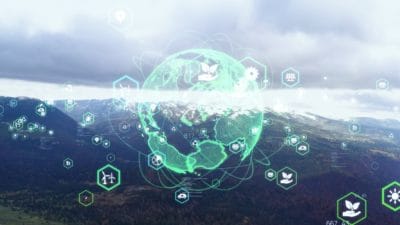Picture this scenario: you walk into a restaurant, order your favourite meal and when it’s time to pay, you simply look into a screen at the payment counter for a few seconds. And just like that, your payment is complete. That’s the power of facial recognition payment. It’s a new way of paying for things that’s becoming popular in some parts of the world.
Let’s take a look at everything you need to know about this new technology.
What is facial recognition payment and how does it work?
As the name suggests, it’s a technology that allows people to pay for goods and services through facial recognition.
Passive income stocks: our picks
Do you like the idea of dividend income?
The prospect of investing in a company just once, then sitting back and watching as it potentially pays a dividend out over and over?
If you’re excited by the thought of regular passive income payments, as well as the potential for significant growth on your initial investment…
Then we think you’ll want to see this report inside Motley Fool Share Advisor — ‘5 Essential Stocks For Passive Income Seekers’.
What’s more, today we’re giving away one of these stock picks, absolutely free!
First, you link an image of your face to a digital payment system or a bank account.
And then, when you want to make a payment, you pose in front of a special camera or screen. It scans your face and compares its features with the image in the system.
Once it confirms that it’s the same person, money is withdrawn from your account and your payment is completed.
Where is facial recognition payment currently in use?
At the moment, China is leading the charge when it comes to the use of facial recognition payment.
There are two main facial recognition payment services in the country: Alipay’s Dragonfly and WeChat Pay’s Frog Pro. Both are currently available in hundreds of retail chains in China.
There is actually a lot of investment going into facial recognition payment in China right now.
Alipay (which is owned by e-commerce giant Alibaba) is spending three billion yuan (£300 million) over three years to put up facial recognition systems across the country.
Elsewhere, in the US, tech start-up PopID has developed its own facial recognition payment service. Close to 70 restaurants and cafes across several cities in the US are currently using the service.
Here in the UK, facial recognition payment is yet to make its debut. But in a time when we are being encouraged to go cashless or use contactless payment methods because of coronavirus, it’s probably only a matter of time before we start seeing it.
What are the benefits?
First, it’s more secure when compared with other payment methods.
Credit card numbers, account passwords and PINs can be stolen or hacked, leading to identity theft and loss of funds. Facial recognition payment requires the presence of a real user in order to grant access.
It’s also more convenient. You don’t have to worry about reaching the checkout only to realise you’ve left your wallet or phone at home. All you need is your face – and it’s always with you!
Are there any concerns?
A common concern with facial recognition technology is that someone could try to trick the system by stealing another person’s photo and holding it up against the camera or screen. However, that’s something that the makers of this technology seem to have anticipated.
For example, Alipay’s facial recognition software and cameras can pick up whether the person is the real thing or a two-dimensional image. They are programmed to watch for signs of life such as a blink or a turn of the head.
This should at least instil some confidence in those who are worried about the security of the service.
What does the future hold for this new technology?
The future looks promising for facial recognition payment. But as to whether it will eventually topple and replace other payment systems, no one truly knows.
While it’s a good alternative to other payment methods like credit cards, there are some people who may never accept facial recognition payment because of privacy concerns.
There is also the issue of government acceptance. At the moment, we don’t know whether governments (including here in the UK) will allow this new technology. We’ll have to wait and see.







